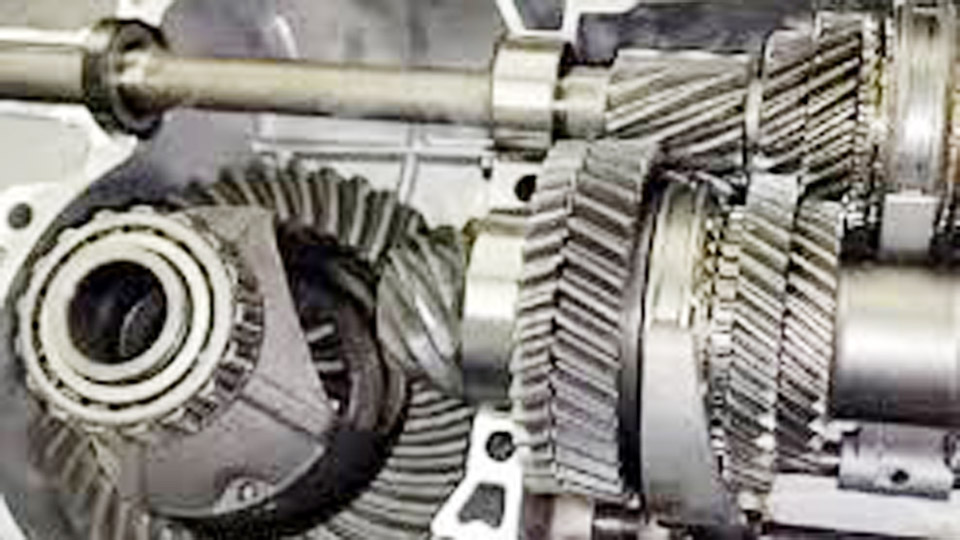How to Fix an Automatic Transmission?
Your automatic transmission is like the magic box in your vehicle—it shifts gears smoothly so you can drive without a fuss. But when it starts acting up, it can feel like a big headache. I’ve been through the ups and downs of transmission troubles, and I’m here to guide you step by step. We’ll explore signs of problems, how to diagnose them, fixes you can try, and ways to keep your car happy.

Photo by advancedtransmission
What Is an Automatic Transmission?
An automatic transmission does the hard work of shifting gears for you. Unlike a manual, where you use a clutch and stick, this system uses fluid, gears, and clever parts to move power from your engine to the wheels. It’s a marvel! I remember when I first popped the hood of my old sedan, amazed at how it all worked together.
But when it fails, you might feel slips, hear noises, or see leaks. Problems can come from low fluid, worn parts, or deeper issues. Knowing what’s what is the first step, and I’m excited to help you understand it.
Signs Your Automatic Transmission Needs Fixing
How do you know something’s wrong? I’ve seen plenty of clues over the years. Here are the big ones I look for:
- Slipping Gears: The car shifts unexpectedly or feels like it’s losing power. It’s like the engine revs but you’re not moving fast.
- Weird Noises: You hear whining, clunking, or humming, especially when shifting. My old van whined like a cranky kid!
- Delayed Shifting: You press the gas, but the car pauses before moving. It’s frustrating, I know.
- Fluid Leaks: Spot red or brown puddles under your car? That’s likely transmission fluid escaping.
- Burning Smell: A burnt odor means trouble—maybe the fluid’s overheating.
- Dashboard Lights: The check engine or transmission light glows. I never ignore these!
If you notice any of these, don’t panic. I’ve learned some fixes are easy, and catching issues early saves time and money. Let’s figure out what’s going on.
Diagnosing Automatic Transmission Problems
Now, we play detective! Diagnosing is fun for me—it’s like solving a car puzzle. Here’s how I do it:
First, I check the transmission fluid. Pop the hood, find the dipstick—your owner’s manual shows where. Pull it out and look. The fluid should be bright red, not dark or burnt, and the level should be right. Low fluid can cause slips or delays. I fixed my cousin’s car once just by adding fluid—simple!
Next, I drive and listen. Take your car for a slow spin. Does it shift smooth? Any odd sounds or jerks? I jot down what I notice. If driving feels risky, park it and get help.
I also use a scanner tool. Auto shops have these, or you can buy one. It reads codes from your car’s computer, pointing to things like a bad sensor. I borrowed one years ago and it saved me hours.
Last, I look underneath. Grab a flashlight and check for leaks. A drip might mean a loose bolt or bad seal. I’ve crawled under cars to spot this—it’s messy but worth it. Once we know the issue, we can fix it!
Common Automatic Transmission Problems and Fixes
Alright, let’s get to the good stuff—fixes! I’ve tackled many issues, and I’ll share what works. Some you can do at home; others need a pro. Here’s my experience:
Low or Dirty Transmission Fluid
This is a common one and easy to fix. If the fluid’s low, I grab automatic transmission fluid (ATF)—check your manual for the right type. I use a funnel and pour it slowly into the dipstick tube. Check the level with the engine running—don’t overfill!
If it’s dark or smells burnt, I do a flush. Drain the old fluid, replace the filter if it’s clogged, and add fresh ATF. It’s like a spa day for your car! This fixed my sedan’s slipping once.
Transmission Fluid Leaks
Leaks happen a lot. I start by finding the source—check the pan, seals, or lines. A loose pan bolt just needs a wrench to tighten. If a seal or gasket’s worn, I clean the area, remove the old part, and put in a new one. Gloves and rags keep the mess down. I fixed a leak on my van this way and saved a bundle. If a line’s cracked, I’d call a pro. It’s doable but tricky.
Faulty Shift Solenoids
Solenoids control fluid flow to shift gears. If your car jerks or a code points to this, I test with a multimeter. A bad one needs replacing—unbolt it, swap it out, and reconnect. Parts run $50 to $200. I fixed a jerky shift this way, and it felt great! If wiring’s bad, I check for breaks. A mechanic can help if it’s complex.
Torque Converter Problems
The torque converter moves power in automatics. If it fails, you might feel shaking or hear noises. This one’s tough. I’ve seen shops replace them because the transmission comes out. It’s a big job—costs $500 or more. My buddy’s car shuddered like crazy until a new converter fixed it. I’d suggest a pro here.
Worn Bands or Clutches
Inside your transmission, bands and clutches help shift gears. If they wear out, shifting gets rough. Fixing this means opening the transmission—a pro job. I’ve watched mechanics rebuild it, replacing worn parts. It’s costly but can save your car. I learned to catch this early with fluid checks.
Here’s a handy table to break it down:
| Problem | Symptoms | Fix | DIY or Pro? |
|---|---|---|---|
| Low/Dirty Fluid | Slipping, delays | Add or flush fluid | DIY |
| Fluid Leaks | Puddles under car | Tighten bolts, new seals | DIY or Pro |
| Faulty Solenoids | Jerky shifts, codes | Test and replace | DIY or Pro |
| Torque Converter Issues | Shaking, noises | Replace converter | Pro recommended |
| Worn Bands/Clutches | Rough shifting | Rebuild transmission | Pro recommended |
Tools and Safety Tips for Repairs
Before we fix anything, let’s talk tools and safety. I’ve learned this the hard way—safety matters! Here’s my go-to list:
You’ll need a wrench set, screwdriver, funnel, jack, and jack stands. A multimeter and scanner help too. I keep rags, gloves, and a drain pan ready—fluid gets messy! Buy quality ATF and parts from an auto store.
Safety first. I park on flat ground and use wheel chocks. When I jack up the car, I secure it with stands—a jack alone isn’t safe! Wear gloves and goggles; fluid splashes. I slipped once—yep, messy lesson! If you’re under the car, tell someone. If a job feels big, I call a pro. Your safety is worth it.
When to Get Professional Help
I love DIY, but some fixes need experts. If the transmission comes out—like for a torque converter or rebuild—I let a shop handle it. They have lifts and skills. If fluid’s fine, no leaks, but shifting’s still bad, it might be internal. I’ve spent hours guessing, then a mechanic fixed it fast.
Repairs can cost $500 to $2,000, but for big jobs, it’s smart. My rule: if I’m unsure or it’s risky, I get help. Your car and peace of mind deserve it.
Preventing Automatic Transmission Problems
Fixing is great, but I’d rather stop trouble first! Here’s how I keep my transmission happy. Check fluid monthly—keep it full and clean. I change it every 30,000 to 60,000 miles—your manual knows best. Drive easy—don’t floor it or shift hard. I warm my car up a minute, especially in winter. Regular tune-ups spot issues early. Avoid heavy towing unless your car’s ready. These tricks have kept my rides smooth for years!
How Welding Helps with Transmission Fixes
You might wonder how welding fits in. I love this part! Sometimes, transmission repairs need a welder’s touch. I’ve fixed cracked transmission pans or broken mounts with my welder. Clean the metal, set the machine, and fuse it strong. Safety’s key—helmet, gloves, and good air flow.
I welded a pan for my truck once—saved me a new part! It’s not for every fix, but it’s handy. If welding’s new to you, take a class or ask a pro. It’s a skill I’m proud to use!
Conclusion: Drive Smoothly Again
From spotting slipping gears and leaks to fixing fluid issues and preventing trouble, you’re ready to tackle your automatic transmission. I’ve been there—nervous about noises, unsure of costs—but with simple checks, a few tools, and maybe some welding, you can do this. Start easy: check your fluid, look for leaks, and drive smart.
If it’s big, a pro’s your friend. I’m so glad we explored this together! You’ve got the know-how to get back on the road with confidence. Safe travels—let’s keep that car running like a dream! Got more questions? Check my FAQs below.
FAQs
What’s the job of an automatic transmission?
It shifts gears for you, moving power from the engine to wheels. I love how it makes driving easy!
How do I check transmission fluid?
Pop the hood, find the dipstick, and pull it out. I check if it’s red and full—simple!
Why does my car slip when I drive?
Could be low fluid or worn parts. I start with a fluid check, then dig deeper.
Can I fix a leak myself?
Sure! I tighten bolts or replace seals. If it’s tricky, I get a pro.
What’s a torque converter?
It’s a part that moves power in automatics. If it shakes, I’d call a mechanic.
How often do I change transmission fluid?
I do it every 30,000 to 60,000 miles. Your manual tells you exact.
Can welding help my transmission?
Yes! I’ve welded cracked pans. It’s fun but needs care—safety first!

David Peterson, the chief editor of sparepartscare. I am an automobile engineer and assign to an local firm with much experience in automobile equipment. During the time, most of my experience is related to the Industry of cars parts. I learned about the thing, when working with experienced inspectors, one must be as good as the inspector, or better, with knowledge of the project as well as the practical aspects of automobile industry.














